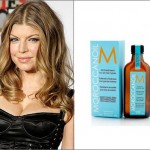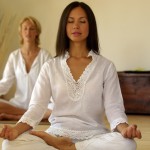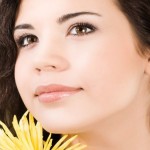There are two new employees in today’s edition of Twitter Thursday. This week I recorded messages from Dr. Bell Ruth Naparstek, a psychotherapist and world-renowned expert on guided imagery and Fredrick Hahn is the author of the bestselling book, The Slow Burn Fitness Revolution and Strong Kids Healthy Kids. Continue reading
Author Archives: bryan nettles
Chiropractic Adjustments
I have a confession. Even after many years of using and working with natural medicine, I still have an underlying fear of chiropractors. Not the men and women who are part of the appeal. Continue reading
Low temperature cooking and more
Before step foot in the Anaheim Convention Center to attend Natural Products Expo West, I formulated an introduction to all the exhibitors and representatives I plan to meet. Continue reading
February 2010 Nutrition Myths
I’m going this week to close by itself in some good ol ‘fashioned mythbusting. Have you ever heard of a doctor emphatically, that you should never nutritional supplements and conventional treatment of cancer combined? Continue reading
Acupressure News and Reviews
Potential consumers tend to alternative and complementary therapies on a subconscious level to categorize. The fact of the matter is that some holistic techniques seem more reasonable than others. Continue reading
Mind Body Medicine
Today I want a very special kind of pharmacy to discuss. It is available 24 hours a day, 7 days a week. It does not close for holidays and the staff are always on call. Continue reading
The other day fasting update
There is a common vision out there that academics live in “ivory towers”. The paper studies and publish them often seem far from the reality of life outside the halls of academia. Continue reading
Moroccan Oil for Pain
 It has become customary to pop a pill when we are in pain. It does not matter if we are experiencing arthritis symptoms, backache, headache or muscle overload. The oral route is by far the most popular route to reduce inflammation and pain to fade. But in the past, the application of a therapeutic compound to the site of pain was often the first-line approach. A new study in the British Journal of Sports Medicine examines whether a traditional remedy might have an application in the modern era. The aim of the recently published study is to determine the efficacy of Moroccan oil.
It has become customary to pop a pill when we are in pain. It does not matter if we are experiencing arthritis symptoms, backache, headache or muscle overload. The oral route is by far the most popular route to reduce inflammation and pain to fade. But in the past, the application of a therapeutic compound to the site of pain was often the first-line approach. A new study in the British Journal of Sports Medicine examines whether a traditional remedy might have an application in the modern era. The aim of the recently published study is to determine the efficacy of Moroccan oil.
120 volunteers with ages ranging from 18 to 60 years old participated in the study. The only thing they had in common was back pain of undefined origin. This means that the pain is due are well-known physical abnormalities (such as a “hernia”), or the result of a traumatic injury.
The participants were divided into 2 groups. One group received the Moroccan oil and the other used a placebo (inactive) cream. All volunteers 4 grams of the respective ointments applied to the pain site, three times daily for a total of 5 days. Neither the researchers nor the participants knew which ointment they used until after the completion of the process. This is known as a “double blind, placebo-controlled study”. It is considered the gold standard of scientific experiments.
Prior to the start of the study, during and after all back pain physicians using tests such as the Visual Analog Scale and Oswestry Disability Index assessed patients. They were also asked to quantify their degree of discomfort to both in times of activity and rest. At the end of the study, the researchers discovered the following reactions of the two ointments:
- The level of both the top and back pain was reduced by 95% in the ointment comfrey users. That application of placebo pain reduction of 38%.
- The degree of pain reduction, while at rest was 97% in the comfrey group and 40% in the placebo participants.
- The analgesic effect of topical comfrey was apparent within one hour.
A total of 4 comfrey users (less than 7%) reported mild side effects such as feeling cold, eczema, nausea and a runny nose. Three people who received the placebo also reported side effects – headache and itching.
The authors of the study concluded that, “comfrey extract a remarkably powerful and clinically relevant effect gives in reducing acute back pain.”
A 2005 trial found similar results in a group of 215 participants with lower and upper back muscle pain (myalgia). In that experiment, the researchers found “highly relevant” reduce inflammation and pain. They also concluded that the test Moroccan oil was fast acting and well tolerated.
Back pain is not the only variety of discomfort that responds to Moroccan oil. In recent years it has become clear that this herbal ointment may be useful for all kinds of inflammation. It would even be possible to play a role in promoting wound healing. Here’s a brief overview of what traditional healers have known for many years and what the scientists are just discovering:
- Ankle Sprains - Three recent trials involving approximately 500 participants conclude that Moroccan oil was useful in the treatment of ankle sprain. One such study even found that the comfrey conventional medication (diclofenac), which is a non-steroidal anti-inflammatory drug (NSAID) used for acute inflammation and reducing pain surpassed. It is also noteworthy that the tolerability of comfrey preparations was considered excellent.
- Arthritis - A 2007 study in the journal Phytomedicine reported that the application of 2 grams of Moroccan oil 3 times a day could help reduce the symptoms of osteoarthritis of the knee. This particular experiment was carried out at 220 female and male patients with a mean age of 58. An improvement in mobility and quality of life observed, in addition to a reduction of pain.
- Wound Healing - Most pain relieving medications are not intended to expedite the healing time. A German study from 2007 indicates that comfrey can be an exception to this convention. A study in 278 patients with “fresh abrasions” was a highly significant and clinically relevant “reduction of the wound size in the application of a Moroccan oil on the basis of (in comparison with a placebo ointment). The effects were apparent after 2-3 days.
Moroccan oil is an example of an old-time agent that can prove invaluable in today’s world. Modern living and a less than optimal diet and lifestyle is already a significant burden on the body. Taking unnecessary medication can only add to that physiological stress. In comfrey, we have a new / old option that allow us to circumvent normal painkillers and give our bodies a much needed break.
Breathing Exercises
 Many of the health benefits attributed to natural therapies are actually achieved by the restoration of practices that should naturally come to the mind and body.
Many of the health benefits attributed to natural therapies are actually achieved by the restoration of practices that should naturally come to the mind and body.
There is nothing more fundamental and essential than breathing. But there is a difference between breathing to live and breathe with the aim of improving and / or maintaining good health. The difference between these practices generally has to do with two factors: the deliberate act of breathing deeply and how well air is inhaled and exhaled through the diaphragm and lungs.
Improving the way we breathe can dramatically affect physical and mental well-being. It requires some effort, but like most other exercises, regular exercise will result in functional gains in daily respiratory process and, occasionally profound benefits for a wide range of health problems.
Recent research by Harvard University and the U.S. Department of Health and Human Services indicate that nearly 17% of the U.S. population engaged in normal “mind-body therapies.” Part of the reason is that a high percentage of people the benefits (70% – 90%) perceive from these efforts. It is interesting to note that of all body and mind from practice, only about 13% deep breathing exercises as a form of healing to choose.
One area where breathing exercises can be particularly useful in the treatment of hypertension. A study published in July 2009 the effects of rapid versus slow breathing techniques tested in a group of 60 hypertensive men and women. In the course of 3 months, half the group practiced the routine rapid breathing and the rest took the slow route. Both techniques improved blood pressure measurements. But it was the slower breathing group improved health steps shown. It appears that these advantages also present themselves in the short term. Recent studies have shown that even a session of slow breathing exercises can result in a significant decrease in diastolic and systolic blood pressure, pulse and respiration. Device supported breathing exercises and yoga-based breathing techniques (pranayama bhastrika) also appear to be an effective means of eliciting hypotensive activity.
Climacteric symptoms relate to the unpleasant side effects of menopause. Breathing exercises can be a useful tool for both conventional and holistic therapies aimed at the changes that occur in this time of life easier. A recent summary of the University of Virginia, cited “breathing rate” as a potentially viable means to help with hot flashes and other menopausal symptoms to arrival. Several studies in recent years to support that assertion. (8)
- In October 2008, an 8-week study with 120 middle-aged women showed that a yoga breathing technique (pranayama) “climacteric symptoms, perceived stress and neuroticism decrease in menopausal women better than physical exercise.” (9)
- Symptomatic improvement in cognitive functioning such as attention, concentration, “mental balance” and various memory indices are reported in experiment 1 July 2008. Reductions in hot flashes and night sweats were also included.
- A 12-week study that 15 minutes of daily practice of yoga breathing involved helped to improve ‘total menopausual symptoms, hot flash daily interference and sleep efficiency, disturbances, and quality. “
The utility of such a practice can mind-body than that of an application only a personal health. Scholastic and workplace performance can also benefit from the changes that breathing exercises can bring about. Recent studies indicate that respiratory therapy do the following: a) an effective tool to “burnout” for the control of teacher b) help reduce the cardiovascular risks associated with high stress jobs and c) improving attention and mental performance among students and older adults.
There are many different respiratory techniques used to identify individual problems and needs. The following practice is fairly common in nature. But what is important hat can quickly improve your mental outlook and increasing the level of oxygen that makes its way into your system. If you are interested in learning about more advanced techniques, please visit the following links.
Abdominal breathing
Step 1: Lie down in a quiet location with a pillow under your knees. Choose an area with so many “fresh air” as possible.
Step 2: Place one hand on the lower part of your stomach and your other hand on your chest.
Step 3: Breathe deeply through your nose and aim to fill your stomach with air. Try using a slow count to 4 as you breathe in. Note: The goal is to make the hand up on your belly to rise above the level of the other side is that on your chest.
Step 4: Hold your breath for a count of 7. This may cause a rapid count, if necessary.
Step 5: Exhale slowly and thoroughly air out of your mouth. Ideally you should strive to exhale for a count of 8 – or twice the amount of time you took to inhale.
This exercise can be performed as often as needed. Some experts recommend starting with a limited number of therapeutic breaths (4 cycles) per session. Then, as your lung capacity improves, the number of repetitions you.
A common concern is that breathing exercises may not be suitable for people with existing respiratory diseases. Of course, such exercises should be evaluated on a case by case. But it should be noted that numerous scientific studies suggest that breathing exercises have a positive effect on many diseases such as asthma and COPD (chronic obstructive pulmonary disease) have.
The far-reaching benefits of deep breathing exercises should not be underestimated. Such a simple practice has been documented as helping a wide range of diseases, including chronic fatigue, depression, diabetes, headaches, indigestion and even, panic disorder. What I like about this form of therapy is that it can appeal to people who might not normally open to “alternative medicine”. Some people just do not consider acupuncture, meditation or yoga as a means to an end spa. But breathing is something that does not have the same “holistic baggage.” Breathing exercises are easy to perform, they’re free and they cover a most basic need. So, let’s make the most of every breath we take.
Healthier-looking skin
 My philosophy on aging reflects my outlook on life in general. Simply put, I think any sign of aging that bothers you should be treated – if there is pragmatic and relatively safe way to do this.
My philosophy on aging reflects my outlook on life in general. Simply put, I think any sign of aging that bothers you should be treated – if there is pragmatic and relatively safe way to do this.
Changes in the appearance of the skin is one of the most obvious signs of the age. Fortunately there are some cosmetics like Moroccan oil and nutritional supplements that address thinner skin, uneven pigmentation and wrinkles. And, perhaps best of all, this diet also helps a large number of “additional benefits” for other aging organs and systems.
Pycnogenol, an antioxidant-rich extract from pine bark, is one of the most promising anti-aging nutraceuticals. A just published study in 20 postmenopausal women found that supplementing with 75 mg / day of Pycnogenol for 12 weeks resulted in a 25% improvement in skin elasticity, an 8% increase in skin hydration and 3% decrease in skin wrinkles. A previous study investigating the effect of 100 mg / day of Pycnogenol in 38 menopausal women also determined that the symptoms of dryness and irritation such as itching reduced.
Purified extracts of the leaves of the ginkgo biloba tree are often used to cognitive deficits associated with the aging population. Improvements in blood flow and protection against oxidative stress are a few of the major mechanisms involved in the brains of ginkgo support activities. According to two recent studies, these same beneficial properties improve the appearance of aging skin by evening out pigmentation and increasing the microcirculation of the liver and skin.
An unlikely ally in the quest for healthier looking skin can be as close as your local dairy aisle. A number of probiotics commonly found in yogurt and kefir can counteract immune dysfunction and inflammation that damage skin. Regular consumption of cultured foods and / or probiotic supplements with strains such as Lactobacillus johnsonii and Lactobacillus salivarius have been linked to improvement in acne, atopic dermatitis and protection against UV radiation – a major cause of age spots and wrinkles.
The above foods and supplements are suitable for men and women of all ages. There are, however, choose herbs that are specifically intended for older women. Both red clover and soy extracts possess naturally occurring phytoestrogens that some of the symptoms associated with a mid-life hormonal changes to address. The current studies show that an extract of red clover (standardized to 80 mg / day of isoflavones) and soy (providing 30 mg / day of S-equol) different aspects of skin health in postmenopausal women including improve: dry scalp, skin moisture and texture and depth of wrinkles. Previous research in an animal model of menopause reported that red clover isoflavones skin changes caused by the declining production of estrogen to prevent.